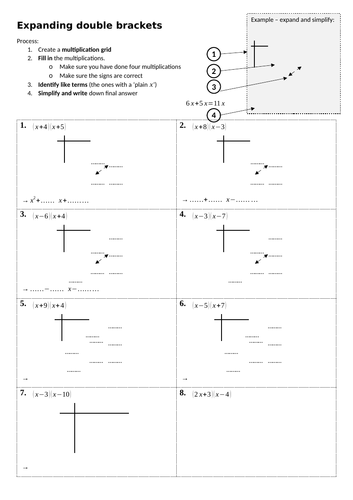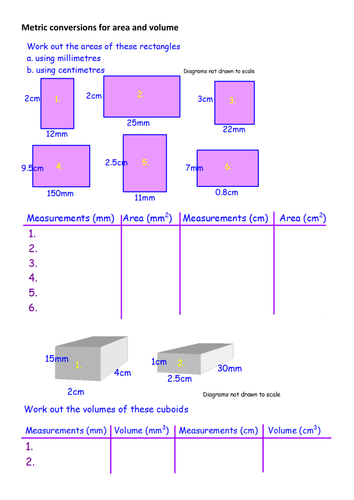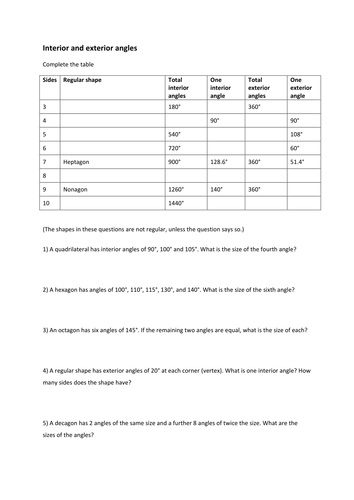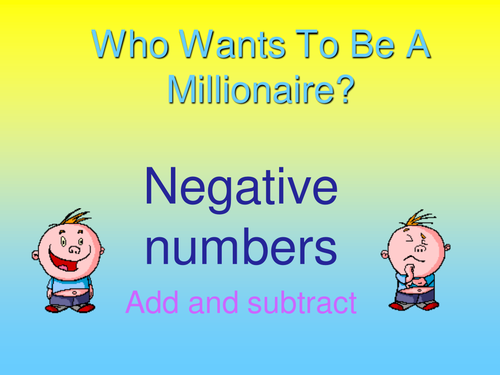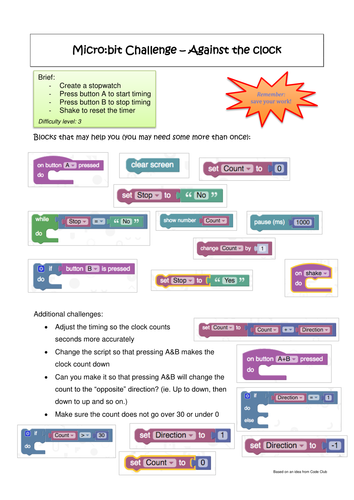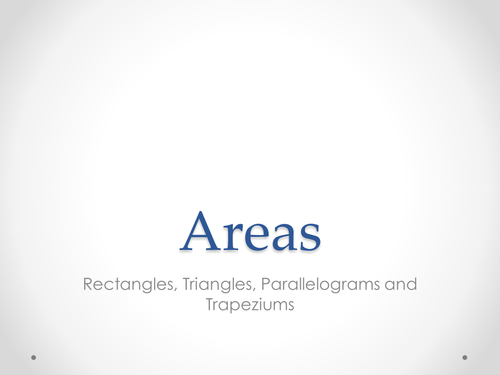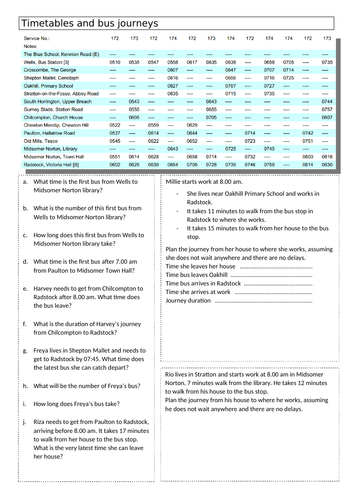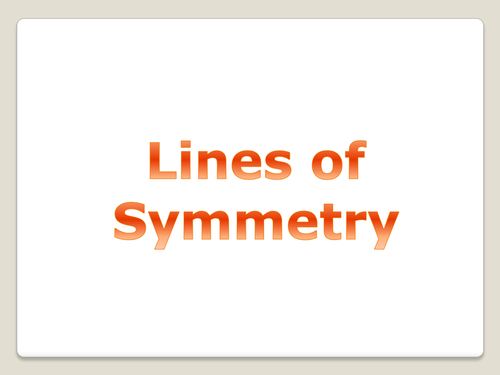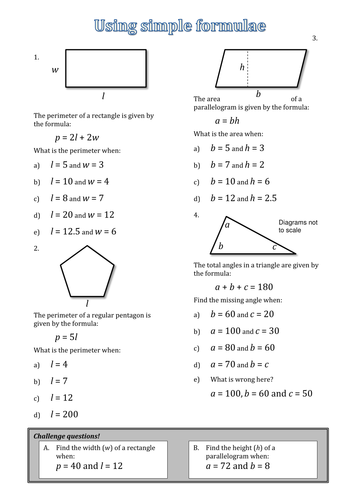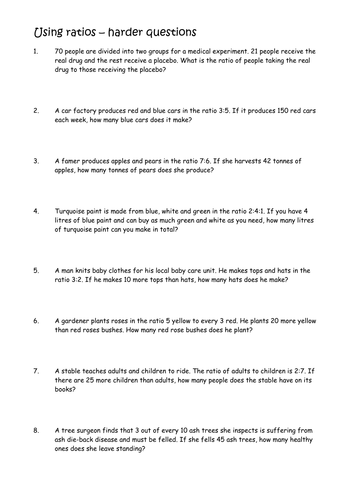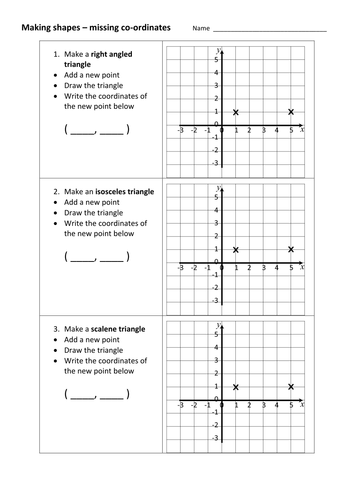
130Uploads
931k+Views
1076k+Downloads
All resources

Expand double brackets - grid method - scaffolded
Worksheet with scaffolding that reduces for each question for expanding double brackets using a “grid multiplication” method.

Simple and compound interest - scaffolded
Example and 5 main questions. Straightforward amounts of money and interest rates for 2 to 4 years. All scaffolded as tables. (Need to be able to find 10%, 5% and 2% using a calculator.) 3 challenge questions where they have to draw out their own tables.
Answers provided. (Question 5 and the Challenges have been rounded to pence - use your own judgement regards acceptable values!)

Circumference of a circle - scaffolded
Example and fill-in sheet with 5Qs for circumference with both radius and diameter. With answers

Metric conversions for area and volume
Straight-forward examples for area/volume using mixed units for length. Can they see relationship?

Interior and exterior angles worksheet
Simple complete the table and answer a few questions exercise.
(12/7/16) Answers uploaded

Millionaire - operations with negatives - easy and hard versions
Classic Millionaire format. You may wish to add brackets around negative numbers, or otherwise reformat. Two versions - one with just add/subtract, other much harder with combinations of operations, squares/cubes etc.

BBC micro:bit challenges
A series of worksheets for the BBC micro:bit. Each has a task brief, suggested blocks to use and some extension suggestions. Each has been given a nominal difficulty level (based on my judgment).
The idea is not to give step-by-step instructions but present a set of relevant 'Lego blocks' to put together in the correct order. The blocks appear on the sheet approximately in order, but pupils will need to think about the order and may need to edit specific text or values. Where similar blocks are needed (such as strings for 'win' and 'lose'), they may only be shown once.
'Solutions 1' is a set of screenshots of my ideas on how to meet the briefs. It is not comprehensive; in particular, few of the more 'basic' solutions are shown. The solutions may not all be optimal. It is called 'Solutions 1' in the optimistic reckoning that more challenges may yet come!
Example-solutions.doc is NOT a document file. It is actually a Zip of tokenised files for working versions of the worksheets which can be loaded into the BBC's online editor. (To use, download the file and change the extension from DOC to ZIP.) Do bear in mind that there may be more efficient ways to achieve the same result (not least by converting from the Block Editor to Touch Develop). This is something that bright pupils might want to investigate, especially for harder tasks or to change how long images/text display on screen.
The files with CC in the name are based on activities suggested by Code Club, but using the Microsoft Block Editor (not Code Kingdoms JavaScript).
[24/5/16 solutions screenshots added.]

Mixed questions on area of basic shapes
Areas of rectangles, triangles, parallelograms and trapezia. Fairly straight-forward questions on area (or using area to find missing sides). Multichoice - so can be used with flash cards.

Timetables and journeys
Worksheet on reading timetables (using a real bus timetable!) and planning journeys.

Reflection and rotation symmetry
9 examples of each to show on whiteboard. Pupils write down (on personal whiteboard?) how many lines of symmetry/order of rotational symmetry. Then reveal answer on IWB. Rotations are 'animated'. Revision/plenary exercise?

Fractions - adding using diagrams
Shade diagrams to add fractions. Fractions without common denominators. First 5 when in same times table, then 3 in different tables. These diagrams pre-drawn and not explained; plus seven questions where pupils need to draw diagrams in their own books.
(Assumes the general idea is already familiar from earlier in curriculum, but you may wish to discuss common denominators and equivalent fractions before they go on to drawing their own diagrams.)
Updated 16/1/16 - second worksheet with more examples added

Area of circles - scaffolded worksheet
Scaffolded worksheet with 5 simple questions on area of a circle.

Solving equations - balanced scales
Illustration of balanced scales for solving equations. 1 and 2-step. [21/1/15] Simple matching worksheet added for 1-step equations. [3/3/15] New version of presentation showing how to deal with the variable on both sides.

Multiplying and dividing by powers of ten
Two main slides showing visually place value adjustment when multiplying/dividing by 10, 100, 1000. Plus puzzle starter. You may just want to use the two main slides in a PowerPoint of your own!

Perimeter of compound shapes
Presentation and worksheet for middle ability Y8 students. (50 minute lesson.) Could be extended for students to calculate area as well.

Substitute in simple formulae
'Quick' worksheet with perimeter of rectangle and pentagon, area of parallelogram and angles in a triangle. Four questions on each.For brighter Y6 (starting algebra) but also for lower ability secondary.

Ratio - harder worded questions
8 questions. Includes questions where the key to the answer is in the "extra" parts (the difference between the two ratios).
(12/7/16) Answers uploaded

Make 2-D shapes from missing coordinates
Find the coordinates that creates the required shape - some of the problems have more than one answer. Others (assuming you use integer values and stay on the grid) do not. Various triangles, square, parallelogram, rhombus, trapezium.\n\nFinal page to identify given shapes - named, congruent, enlargement.

Sequences - using/finding nth term - scaffolded
Use nth term rule and find nth term for linear expressions (2-sided worksheet for each). Worksheets scaffolded. First with missing terms and second to find multiplier and difference between that times table and the sequence given.\n\nNot a lot different to exercises in books but hopefully attractive and less intimidating (limited number of questions!) for a lower ability group.

